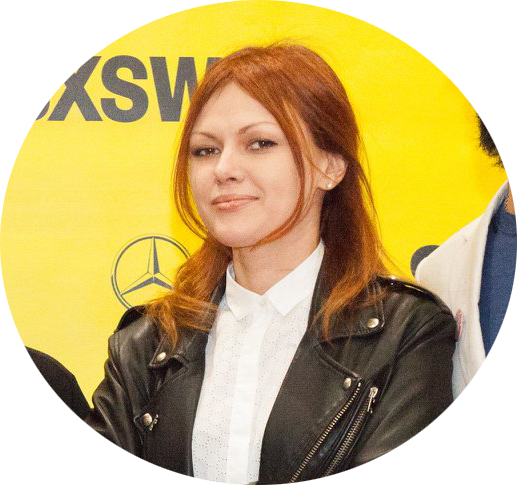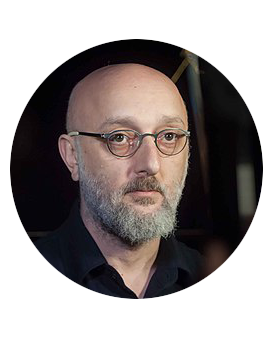The Beginnings of Screenlife. From Sideshow to New Language
This article is a short piece from the upcoming book about the Screenlife format. It is scheduled for publication later this year.
In September 2013, the short film Noah premiered at the Toronto Film Festival. The 17-minute work about the catastrophe of teenage first love stands out for only one thing: the entire film takes place on a computer screen, in several windows and apps.
The creators of the work, Patrick Cederberg and Walter Woodman, were students at Ryerson University at the time of filming. The role of protagonist Noah Lennox was played by Sam Kantor. However, it takes quite a while for the viewer to see him. It turns out that it is not necessary to see a person’s face to learn who he is and how old he is, when his computer screen is in front of you. On the screen — porn in the background, his Facebook page, chat with his girlfriend Amy. She writes that they should talk (with their voices! On Skype). But Noah clearly does not want to talk, or maybe he senses that the upcoming conversation will not be very pleasant. So Noah begins an investigation into the reasons for this conversation: he looks through Amy’s photos on social networks, likes, comments, and photos of an unfamiliar guy. Then, tormented by questions and suspicions, breaks a taboo: he breaks into his girlfriend’s account. Woodman and Cederberg convey the tension of the protagonist’s indecision with pauses and the blinking of the cursor before he clicks.
In 2013, Noah, for all its elegance, looked like a one-off lab experiment — a tribute to trends and the pervasive obsession with social media, along with the inevitable isolation it causes. The name of this gimmicky movie is elegantly metaphorical too: the Internet environment becomes a real ark for the new Noah, and there will be a place for all creatures there. But it seems the reviewers who praised the film for its technical innovation did not anticipate the innovative method finding other applications. It is unlikely they knew it is possible to make a full-length film in this mode — moreover, that it had been in development and production for a long time.
Timur Bekmambetov
Head of the Bazelevs company, director of the film Profile

“It all started in 2012. I was in Louisiana, on the set of Lincoln, with a very bad Internet connection, and my colleague Olga Kharina had to run a poster by me for a new film from our company. We spoke on Skype, the attachment could not be sent no matter how hard we tried, and so I suggested that she share her computer screen with me. Then everything worked out. We discussed the poster and continued on to another topic. But Olga forgot to turn off her screensharing. As a result, I talked to one Olga, but saw several Olgas at once: one was talking to me and taking notes, another discussed flights with her mother on a messaging app and ordered her tickets, and a third Olga told her friend that she would be late for her birthday party because I was calling. In addition, I could read the friend’s response, in which she stated her feelings about our conversation quite succinctly. I saw all this, and did not know how to tell her that I was inside her personal space that was not intended to be seen. And then I caught myself thinking that everything we think, everything we feel is on our screens when no one sees them. Throughout its history, cinematography has dreamed of showing what and how a person feels, but it could not find a suitable instrument for this, except the voiceover. And then I literally saw this instrument on my screen. What happens on our screens says much more about us than any selfies or messages on social media. There is a saying, “The eyes are a mirror of the soul.” This is not true – you can create eyes. The mirror of a modern person’s soul is the screen of their laptop or smartphone.”
Olga Kharina
Profile, producer

“Intuitively, we always try to hide the screen of our smartphone from people in the Metro and sit so that our screen won’t be visible to anyone. The screen is something we hide. What’s on it? What’s the truth that we hide from each other so assiduously? Screenlife gives us a way to this truth. It is our screen, and not a talking head on Zoom, that is screenlife. My head, which was discussing the poster with Timur, was not interesting to anyone. I was pretending to Timur that I was completely absorbed in speaking with him, but at the same time I was doing a few other things, including discussing our conversation with my friend. This is what hooked him. Unwittingly, he ended up inside my head, and realized that a film viewer could do the same thing.”
Neuchâtel International Fantastic Film Festival NIFFF / YouTube
Some time later, Bekmambetov shared the idea of writing a film script that took place entirely on a computer screen with Nelson Greaves. Unfriended was Greaves’ debut as a screenwriter. He wrote the story while working as assistant director on the set of Bekmambetov’s film President Lincoln: Vampire Hunter.
At the center of Unfriended are the traditional makings of a youth horror movie: the heroes are high school students, but instead of going off in the wilderness for the weekend, but they gather on Skype… In the story, we see the screen of the unfortunate Blair Lily, who first recalls a local tragedy – the suicide of classmate Laura Barnes, who was a victim of cyberbullying. The girl is sad. But Blair goes from videos of Laura shooting herself to an erotic conversation she had with her boyfriend Mitch in just a couple clicks. Soon, other friends join the conversation, and so does an insidious lurker. This is how the journey into the land of horror begins. An evil spirit from the Internet calls for a reckoning – and they can deny nothing, because nothing that happens on the Internet ever dies and it is never forgotten.
The little film made a real splash. The experiment was to maintain the Screenlife format for over an hour, and it was declared a success. A real revolution can be seen in the desktop spectacle. Critics immediately recalled the great André Bazin, who dreamed of the moment when the medium of cinema, the film on which reality is imprinted, would dissolve and leave the viewer alone with reality. Unfriended is just such an encounter with reality. A desktop computer is something from the world of the mundane, and when you are in front of it, you inevitably reach for the trackpad or mouse to get control over it. But there is no mouse. And this is a scarier encounter with the reality than the Lumiere Brothers’ train had been.
Nelson Greaves
Unfriended, screenwriter

“We noticed that the stories we tell can change attitudes towards what we use every day. Let me give you an example. In Unfriended, the sound of a Skype call is a harbinger of evil. Many viewers later said that, when someone called them on Skype after watching the film, they shuddered — they had a change in their associative array. Skype calls, and they are slightly horrified. Before watching our movie, people would just get pissed off if the image on the screen froze, but in our movie, that freeze meant something deadly. It’s amazing how films can replace and retrain our feelings and emotions in relation to familiar things.”
The feeling that, in Unfriended, thanks to the experimental format, they finally managed to catch reality by the tail and present it to the viewer, of course, came upon the authors after the first screenings of the finished film. But the path had already been outlined while working on the film script, when the logic of the new drama was formulated.
Nelson Greaves: “Working on the script for Unfriended taught me to get into the head of the hero. In Screenlife, you, as a spectator, turn into the hero of the film, because you are watching the story in the first person.”
Olga Kharina: “Screenlife is a new way to understand a first-person story. This technique has been used in the literature for a very long time. But in cinema, its capabilities could only truly be revealed in Screenlife. Because there you really get into the head. You can show how the head works, for example, writing and erasing a message.”
After the first version of the script was written, Bekmambetov offered its production to his friend Leo Gabriadze, director of the Bazelevs studio.
Leo Gabriadze
Unfriended, director

“The idea immediately interested me because it had many limitations. That is always a challenge for the director. How do you keep the viewer’s attention if the whole story unfolds on the heroine’s computer screen? It was a guerilla project, there were only a few of us, and we worked for a year and a half, hiring actors every now and then who were paid very little — just $25 a shoot. We rented an inexpensive house with enough rooms where we could rehearse and film. My wife and I went to the store and bought some clothes, the cheapest we could find, as a props. After filming we sat in the same room for another year and a half and edited the movie.”
The first full-length Screenlife was filmed by trial and error. It turned out that the new language required a new approach to all stages of filmmaking – preparation, filming, and editing. The innovations in production will be discussed more in the following chapters. The budget for Unfriended was fantastically modest, especially by American standards — about $120,000 for production. But while economizing, the team could experiment, take more time for rehearsal and editing, do additional mobile filming, and achieve better quality.
It’s hard to believe now, but to film the first Screenlife, they had to gather all the actors in the same house, put them in different rooms and create an internal network. The Internet still did not have the signal transmission capacity to shoot the movie remotely, as it happened several years later on the set of Timur Bekmambetov’s Profile, when the director and the two actors were in different parts of the world, and only met in person at the premiere of the film.
After Unfriended was finished, not even Bekmambetov’s closest associates really believed it had rental potential. Would viewers go to the movies to watch the action on someone else’s computer screen for an hour and a half?
Igor Tsai
Producer of films Searching, Profile, Dead of Night, R#J

“Initially, I was skeptical about it. Probably because any producer who wants to get somewhere thinks like this: the bigger, grander, and more expensive the project, the better. And here were some phones, a computer screen, a tiny budget… A strange experiment. To be honest, I didn’t pay much attention to him at first.”
Timur Bekmambetov: “I went to American producers and studios and talked about why this movie should be made. Nobody believed me. Then we finished the film and started showing it. And again no one believed us. Until the film won the Audience Award at the Montreal festival and got good press. Then producer Jason Bloom came along and helped us get the film out of the box.”
The critic apparently underestimated the desire of the traditionally young horror audience to enter the head of a “teenage numbskull” they could identify with. Interest in the film’s advertising campaign was phenomenal. The international trailer for Unfriended is still a Twitter recordholder. On January 14, 2015, users published 261,941 posts about the trailer and the film.
The critics were not the only ones who saw Screenlife’s potential after the Montreal screenings. Jason Blum, founder and head of the independent horror company Blumhouse Production who has such indie hits as Whiplash and Get Out, became interested in the film. He came to believe in Unfriended, not least because he himself produced the horror franchise Paranormal Activity, which has become a real phenomenon in the commercial found-footage world.
With a minimal production budget and a very modest production costs — the major Universal handled the release — Unfriended grossed more than $64 million in worldwide theatrical distribution. It was one of the three most successful projects in America in 2015 by ROI. In addition, the film won an MTV People’s Choice Award.
Timur Bekmambetov: “And that was it — the wall was broken, and now everyone was climbing over themselves and saying, let’s make movies like that, it’s so interesting and profitable. But that’s not what happened. Everyone decided that the success of our experiment was one of the last splashes of that wave of cheap and successful found-footage horror, which was no more. Nobody recognized the new cinema language at that time.”

